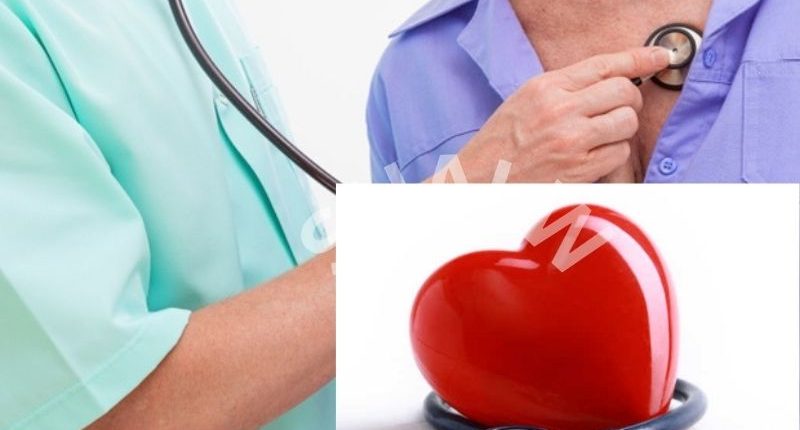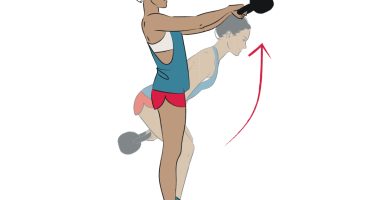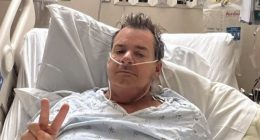The 7-Second Trick To Prevent A Heart Attack – A heart attack can be a very frightening experience. The thought of your heart suddenly stopping is enough to send anyone into a panic. However, there are things you can do to prevent a heart attack from happening in the first place. Knowing the warning signs and understanding how to act quickly can save your life.
The first step is to understand the warning signs of a heart attack. These can include chest pain, shortness of breath, sweating, nausea, and lightheadedness. If you experience any of these symptoms, it is important to call 911 immediately and get to a hospital as soon as possible.
Once you are at the hospital, the medical staff will work to stabilize you and determine if you are having a heart attack. If they determine that you are, they will likely give you medication to break up the clot that is causing the heart attack. This process is called thrombolysis. In some cases, surgery may also be necessary to open up blocked arteries.
After you have been treated for a heart attack, it is important to take steps to prevent another one from happening. This includes quitting smoking, eating a healthy diet, exercising regularly, and managing stress. You may also need to take medication to help lower your risk of having another heart attack. By taking these steps, you can greatly reduce your risk of having another heart attack and living a long and healthy life.
What are the Causes of a Heart Attack?
There are many different contributing factors to the development of a heart attack. Some of the more common causes include:
Atherosclerosis: This is the buildup of plaque in the arteries, which can restrict blood flow to the heart muscle and lead to a heart attack.
Coronary artery spasm: This is when the arteries that supply blood to the heart muscle spasm or constrict, which can also lead to a heart attack.
Heart conditions: There are several different heart conditions that can increase your risk of having a heart attack, such as cardiomyopathy (a weakening of the heart muscle), arrhythmias (abnormal heart rhythms), and valve problems.
High blood pressure: This is one of the most important risk factors for developing a heart attack. When your blood pressure is too high, it puts extra strain on yourheart and arteries, which can eventually lead to a heart attack.
Diabetes: Both type 1 and type 2 diabetes can increase your risk of developing a heart attack. Diabetes can damage your arteries and make it more difficult for your body to process fats, which can lead to atherosclerosis.
Symptoms of a Heart Attack
There are many symptoms of a heart attack, and they can vary depending on the individual. However, there are some common symptoms that most people experience when having a heart attack. These include chest pain or discomfort, shortness of breath, pain in the jaw, neck, or back, nausea or vomiting, lightheadedness or dizziness, and cold sweats. If you experience any of these symptoms, it is important to seek medical help immediately as a heart attack can be fatal.
The 7-Second Trick to Prevent a Heart Attack
If you are someone who is at risk for heart disease, you may have heard that the best way to prevent a heart attack is to exercise regularly and eat a healthy diet. However, there is one other simple trick that can help you prevent a heart attack: spend seven seconds holding your breath.
When you hold your breath, your body increases its production of nitric oxide. Nitric oxide is a molecule that helps to relax and widen blood vessels. This increase in nitric oxide can help to lower your blood pressure and reduce your risk of having a heart attack.
You can do this simple trick anywhere and at any time. Simply take a deep breath in and then hold it for seven seconds before exhaling slowly. You can repeat this several times throughout the day, or whenever you feel like you need to relax and lower your stress levels.
Also read | Does Drinking Water Make You Wetter During Intimacy? A Scientific Look Into This Question
Common Mistakes When Doing the 7-Second Trick
One of the most common mistakes people make when doing the 7-second trick is not taking enough time to do it properly. Remember, you need to count slowly and deliberately to seven, then repeat the process three times. If you rush through it, you’re likely to miss something important.
Another mistake is not paying attention to your body. The 7-second trick is designed to help you focus on your breathing and heart rate, so if you’re not paying attention to how your body is feeling, you’re not going to get the full benefit. Be sure to focus on your breath and how your heart feels as you do the trick.
Finally, don’t be discouraged if it doesn’t work the first time (or even the first few times). It takes practice to get good at it, so keep at it and eventually, you’ll be able to use it effectively in an emergency situation.
Guidelines for Using the 7-Second Trick
If you think you’re having a heart attack, time is of the essence. Every minute that passes without treatment, your heart muscle is deprived of oxygen and starts to die. That’s why it’s important to know the signs of a heart attack and to get help fast.
The 7-Second Trick is a simple way to assess whether you’re having a heart attack. Just ask yourself these 7 questions:
1. Are you experiencing chest pain or discomfort?
2. Is the pain or discomfort radiating to your jaw, arm, or back?
3. Are you short of breath?
4. Are you sweating?
5. Do you feel nauseated or dizzy?
6. Are you feeling lightheaded or like you might pass out?
7. Is your heart racing?
If you answer “yes” to any of these questions, it’s time to call 911 for help. Don’t wait! Every second counts when it comes to a heart attack.
Alternatives to The 7-Second Trick to Prevent a Heart Attack
When it comes to heart health, there is no one-size-fits-all approach. Some people may benefit from the 7-second trick, while others may find that other methods work better for them. Here are a few alternatives to the 7-second trick that you may want to try:
1. The 10-Second Trick: This method is similar to the 7-second trick, but instead of holding your breath for 7 seconds, you hold it for 10 seconds. This can help to slow down your heart rate and prevent a heart attack.
2. The 5-Minute Trick: This method involves taking 5 minutes out of your day to relax and de-stress. During this time, you should focus on deep breathing and letting go of any negative thoughts or stressors. This can help to lower your blood pressure and reduce your risk of a heart attack.
3. Exercise: Getting regular exercise is one of the best things you can do for your heart health. Exercise helps to strengthen your heart muscle, improve circulation, and reduce stress levels. Try to get at least 30 minutes of moderate exercise each day.
4. Healthy diet: Eating a healthy diet is another important factor in preventing a heart attack. Make sure to eat plenty of fruits, vegetables, whole grains, and lean protein. Avoid processed foods, sugary drinks, and excessive amounts of saturated and trans fats.
5. Quit smoking: If you smoke cigarettes, now is the time to quit!
Risk Factors for Heart Attacks
There are many risk factors for heart attacks, but some are more common than others. Smoking, high blood pressure, and diabetes are all major risk factors for heart attacks. Other risk factors include family history, age, and gender.
Smoking is one of the most important risk factors for heart attacks. Cigarette smoking greatly increases the risk of having a heart attack. If you smoke, quitting is the best thing you can do for your heart health.
High blood pressure is another major risk factor for heart attacks. If your blood pressure is high, it means your heart has to work harder to pump blood around your body. This can lead to a heart attack. Keeping your blood pressure under control is important for preventing a heart attack.
Diabetes is another major risk factor for heart attacks. If you have diabetes, your body cannot properly process sugar. This can lead to high levels of sugar in your blood, which can damage your arteries and increase your risk of having a heart attack. Keeping your diabetes under control is important for preventing a heart attack.
Family history is another important risk factor for heart attacks. If someone in your family has had a heart attack, you may be at increased risk yourself. This is because genetics play a role in the development of cardiovascular disease. Age and gender are also important risk factors for heart attacks. The older you are, the greater your risk of having a heart attack. And men are at greater risk than women (although women are at increased risk after menopause).
How to Prepare for a Possible Heart Attack
First, talk to your doctor about your risks and what you can do to reduce them. You may be advised to make lifestyle changes, such as eating a healthier diet and getting more exercise. You may also be prescribed medication to help lower your risk of a heart attack.
Second, know the signs and symptoms of a heart attack. These can include chest pain or pressure, shortness of breath, nausea, sweating, lightheadedness, or pain in the jaw or arm. If you experience any of these symptoms, call 911 immediately and get to a hospital as soon as possible.
Third, have an emergency plan in place in case you do have a heart attack. Make sure your family or close friends know how to reach you and where you keep your emergency medications. If you live alone, arrange for someone to check on you regularly or install an emergency alert system in your home. By taking these steps, you can be prepared for a possible heart attack and help improve your chances of survival.
Steps to Follow During a Heart Attack
1. Immediately call 911 or your local emergency number.
2. Chew and swallow one adult-strength aspirin tablet. Aspirin helps prevent blood clots from forming.
3. Sit down, recline, or lie down, with your feet up if possible.
4. Wait for help to arrive. Do not try to drive yourself to the hospital.
Tips to Reduce Your Risk of Having a Heart Attack
1. Quit smoking. Cigarette smoking is one of the most important risk factors for having a heart attack. If you smoke, quitting is the best thing you can do for your heart health.
2. Eat a healthy diet. A diet that includes plenty of fruits, vegetables, and whole grains and is low in saturated and trans fats can help reduce your risk of a heart attack.
3. Get active and stay active. Regular physical activity can help reduce your risk of a heart attack. And if you’ve already had a heart attack, exercise can help your recovery.
4. Control your cholesterol and blood pressure levels. High cholesterol and high blood pressure are both major risk factors for having a heart attack. If you have either of these conditions, working with your doctor to control them can help reduce your risk.
5. Manage diabetes. If you have diabetes, keeping your blood sugar under control can help reduce your risk of having a heart attack or other complications from diabetes such as kidney disease or stroke
Conclusion
In conclusion, the 7-second trick to prevent a heart attack is a simple and effective way to reduce your risk of suffering from a heart attack. By using this technique, you can help keep your cardiovascular system healthy and strong. Remember that prevention is always better than cure when it comes to any health condition and so taking steps now to protect yourself could be life-saving in the future.
Home | The 7-Second Trick to Prevent a Heart Attack








